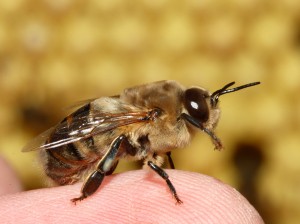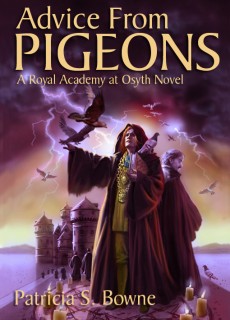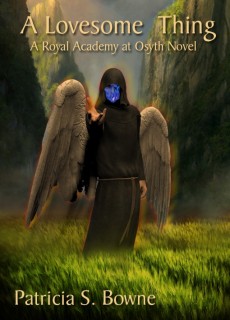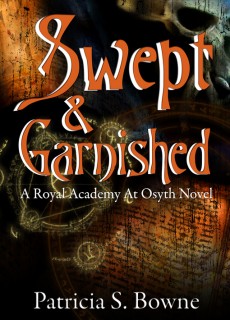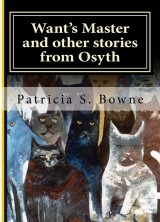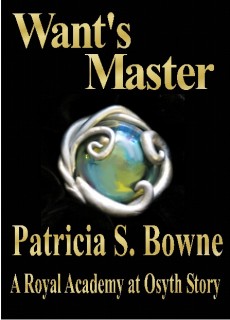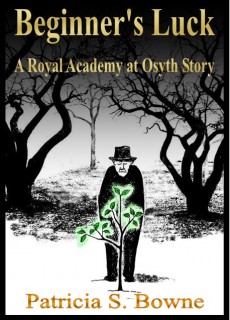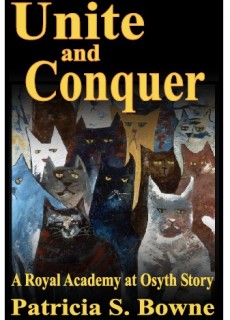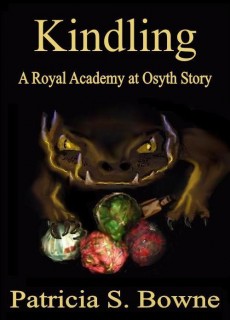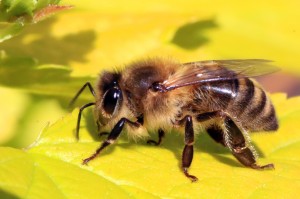 First there was Bonsels’ Maya the Bee, which my folks gave me way, way back in the day. I must have been five or thereabouts. I did not notice any of its political subtext.
First there was Bonsels’ Maya the Bee, which my folks gave me way, way back in the day. I must have been five or thereabouts. I did not notice any of its political subtext.
Then there was The Mother Hive by Rudyard Kipling, with the creepy wax-moth. Even as a child, I had a dim feeling that this was political; but I hadn’t any idea what it was political about. I did get the message that smooth-talking folks who promised to change things for the better while dropping their eggs all around the place were to be avoided; but absent historical context, this can be pointed at any part of the political spectrum.
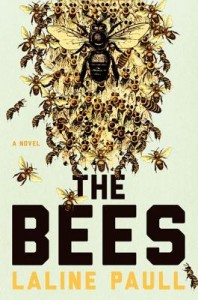 Now The Bees by Laline Paull, quite different. What an ambiguous hive we’re introduced to, with its anonymous enforcers and sinister priestesses! If Kipling’s wax-worm had written a book about the hive, this is how she would have seen it. She would have championed the ‘defective’ bees that Paull’s enforcers kill.
Now The Bees by Laline Paull, quite different. What an ambiguous hive we’re introduced to, with its anonymous enforcers and sinister priestesses! If Kipling’s wax-worm had written a book about the hive, this is how she would have seen it. She would have championed the ‘defective’ bees that Paull’s enforcers kill.
Paull creates a much better built-up bee society than Kipling, though parts of it troubled me – mainly the division of the bees into familial castes. I found that hard to believe, as I found hard to believe the way the different families are assigned different roles and the protagonist switches between cleaning and other jobs at her own volition or the whim of other bees; I had thought all worker bees switched from job to job as they aged, cleaning at the beginning of their lives, so the intra-hive political jockeying struck me as gratuitous and a bit heavy handed.
Update! This bugged me so much that I’ve been delving into bee research and find that it does indeed appear to be true. The queen mates multiple times, providing genetic variability among the worker bees, and that genetic variability is correlated with behaviors like brood cleaning, mite removal, and fanning. I thought I could not be more impressed with Ms. Paull’s book, but I was wrong.
But most of the book was delightful. The drones, for instance; they are so perfectly drones, and the worker bees’ responses to them so pitch-perfect (“Your maleness!”). The way bees are described as part human and part insect works beautifully, especially when the larvae in the nursery are described as having sweet little faces. The landscape around the hive is well-realized, especially the chilling discovery in the rape-seed field, and the wasps are delightfully wicked.
And Paull does much better than Kipling in explaining the bees’ loyalty to the hive, even with all its police-state aspects. The Queen’s presence is so strong you can completely buy into the worker bees’ love for her. The bees have a rich spiritual life, based heavily on smell but also on telepathic communication by antennae. One of the strongest points of this book, for me, was the way Paull manages to evoke the bees’ groupthink – the term ‘hive mind’ is used without irony – without undercutting it. This is the most important thing in the world to the bees, the unifying force behind their civilization, and she treats that respectfully rather than using it to make a cheap political point (as, for instance, T.H. White did with the ants’ antennal communication in The Sword in the Stone).
This book reads like the final fruit of many happy hours poring over the lives of bees, and it gave me several happy hours and some new knowledge about both writing strategies and insects. I can’t ask for more.
And another update: This book gave my book club our best discussion in living memory. We were diving into it before all the members had arrived, and kept up vigorous, excited discussion all evening – aided by printouts of bee behavior articles, homemade honey, and photos of backyard hives.
Of all the fantasy novels I’ve read in the past few years, I enjoyed this one the most and it’s still giving me tremendous fun as I delve into bee genetics. I can’t recommend it highly enough.

